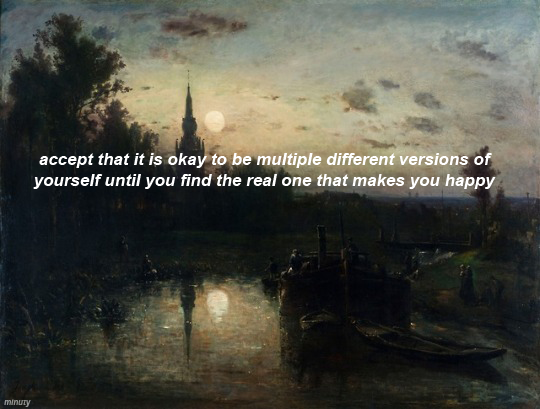Text
The Sumiya
This post features a compilation of photos taken in and around the Sumiya by legendary photographer Thomas Hoepker in 1977. The Tayuu is a very young Hanaougi, the now longest serving modern Tayuu. At the time of this photoshoot Hanaougi was working for the Sumiya as a tourist Tayuu, as a living exhibition piece to illustrate the fading art of the Tayuu. Her Miyoseki then was Yachiyo so this is what she will be called here and we will be discussing the Sumiya’s modern history through the lens of Yachiyo’s life

But before we dive in, some thing must be said about Yachiyo: She was indeed considered a tourist Tayuu and this had mostly to do with time. She had grown up in the quarters and had learned the arts of Tayuu but wanted to be married and wanted to raise a family. The Sumiya made this possible due to a new offer they had for first timers and tourists: Public performances of tea ceremonies, Tayuu dances and ozashiki, much like is now a new development for the gokagai, Shimabara’s Tayuu made these progressive adjustments in the seventies. A few years after these photos were taken, Yachiyo switched affiliation to the Wachigaiya and inherited a new Miyoseki. Up until 1985 she was still called to host ozashiki in the Sumiya but after that it has become a museum, a testament to the last Tayuu of Japan, a testament to unique history of Shimabara.

When the Sumiya retired from hosting Tayuu in their okiya, their role as ageya became even more prominent. It is hard to grasp these days as the Wachigaiya has become this omnipresent keeper of tradition, forever finger wagging and moralizing over Tayuu culture but even today the authority of the Sumiya is faintly felt in Aoi’s Hassaku dochu where even she displays gratitude to the museum. At the time though the Sumiya must have been a bastion of traditionalist art, a place where poets and artists, politicians and faded royalty alike mingled in the salon like atmosphere. The Nakagawa family name is tied to the house since 1641 even before the actual building had reached its most pompous form.

What does an ageya do? The original purpose of the space was to be a place pf pleasure. Entertainment with wine, food and women. Since the Sumiya has its own kitchen facilities (beautifully preserved to this day), the house became very well known as a restaurant where food was prepared on location in contrast to the ochaya where Geiko entertain, food is usually catered by external producers. The Sumiya had everything a heart desires on hand, great food, great drinks and unique hostesses. The whole concept was insanely popular up until 1985 when the Sumiya closed its doors. It reopened as a museum in 1998 but the Sumiya preservation society was founded in 1989 already so there are a few year unaccounted for during the transition from a place full of life, love and fantasy to rooms of reminiscence over long forlorn traditions.

The Sumiya is unique because it is not a temple, not a palace, not a shrine but it has survived over 300 years because it was a testament to one of the great pleasures of life. There is no other truth more prominent to finding strength in belief but losing yourself to pleasure. This is how the Sumiya survived, it was the last testament to luxurious indulgence. But it was clearly going to become very dated very fast and if we could ask the Tayuu of the Edo period they could not predict that a an institution like the Sumiya could fade, too enveloping and long lasting was its importance. It was literally larger than life.

Without going into deep, we all know that all things considered too big to fail usually are described as such before their downfall and so was the case for the Sumiya. It represents very old timey tastes and preferences. The Japanese are usually very kind to their culture and traditions, they were never going to let it sit and collect dust but even though there is much appreciation for the eternal qualities of the Sumiya, it contradicts the nature of Tayuu culture as a place for dynamic exchange of ideas, art and entertainment. In the end, the decline of the Sumiya has become representative of the Tayuu’s art. It has become stiff and dusty. There is no corp of teachers that revive the dances, no input to create new styles or to reinterpret it for a new audience. The modern Tayuu are reliant on well educated patrons willing to invest in their insanely exclusive services. For the few who don’t appreciate rosy cheeked Maiko, who don’t like the empty conversation of teenage girls in training, who love the Noh theatricals of experienced Tayuu there is a place in the karyukai.

It must be strange for outsiders and even for Tayuu themselves that such a niche art form has managed to survive and still be relevant as to be deemed worthy of a whole dedicated museum. I often wonder how outsiders think when they read posts like these. They are full of retrospection while talking of the everyday. How strange it must be for a Tayuu to live her life in this twilight of past and present. Being the last one in a chain of great women in art. Never the producers but the interpreters, the faces of art.

Source: Thomas Hoepker for Magnum Photos
316 notes
·
View notes
Photo

Single Twilight, 2005 - Anne-Elizabeth Sobieski oil on canvas | source:
27K notes
·
View notes
Photo

Champs-Élysées, Paris, 1951 by Bert Hardy
40K notes
·
View notes
Photo








“Once you’ve met someone you never really forget them. It just takes a while for your memories to return.”
1K notes
·
View notes
Text
Fuori piove, un po’ come il mio umore.
Chris.
110 notes
·
View notes
Text
Cosa succede quando arrivi al limite? Quando cadono talmente tante lacrime che non sai se mai smetteranno di rigarti il viso...
0 notes













